
How to Use L7812LC: Examples, Pinouts, and Specs
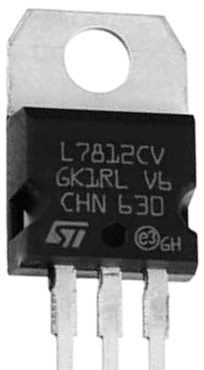
 Design with L7812LC in Cirkit Designer
Design with L7812LC in Cirkit DesignerIntroduction
The L7812LC is a linear voltage regulator designed to provide a stable and reliable output voltage of 12V. It is capable of delivering up to 1A of output current, making it ideal for powering a wide range of electronic devices and circuits. This component is equipped with built-in thermal overload protection and short circuit protection, ensuring safe operation under various conditions. Additionally, its wide input voltage range allows it to be used in diverse applications.
Explore Projects Built with L7812LC
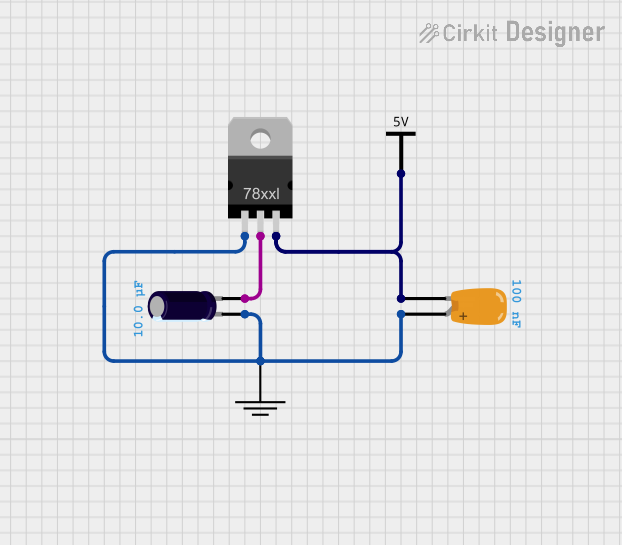
 Open Project in Cirkit Designer
Open Project in Cirkit Designer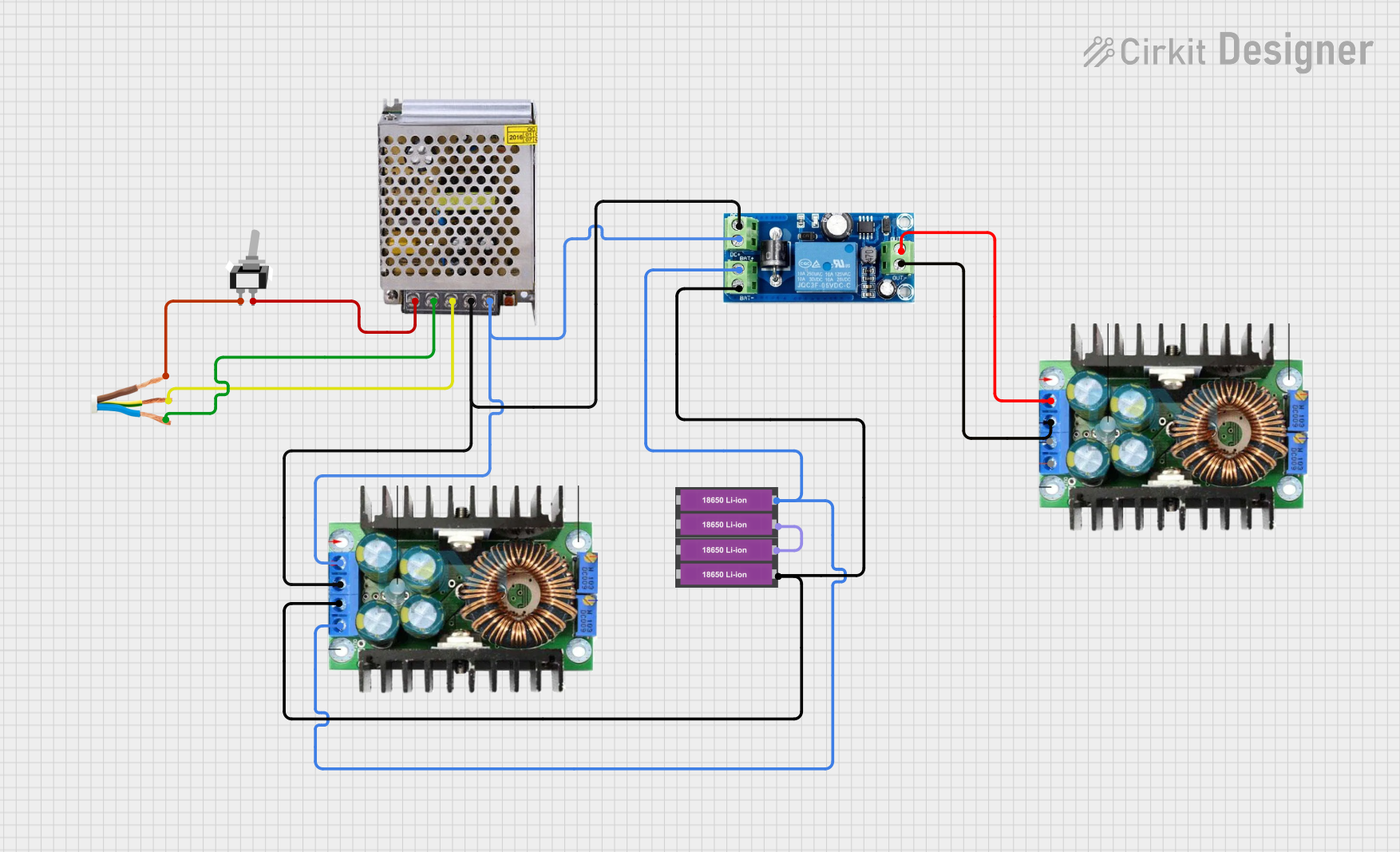
 Open Project in Cirkit Designer
Open Project in Cirkit Designer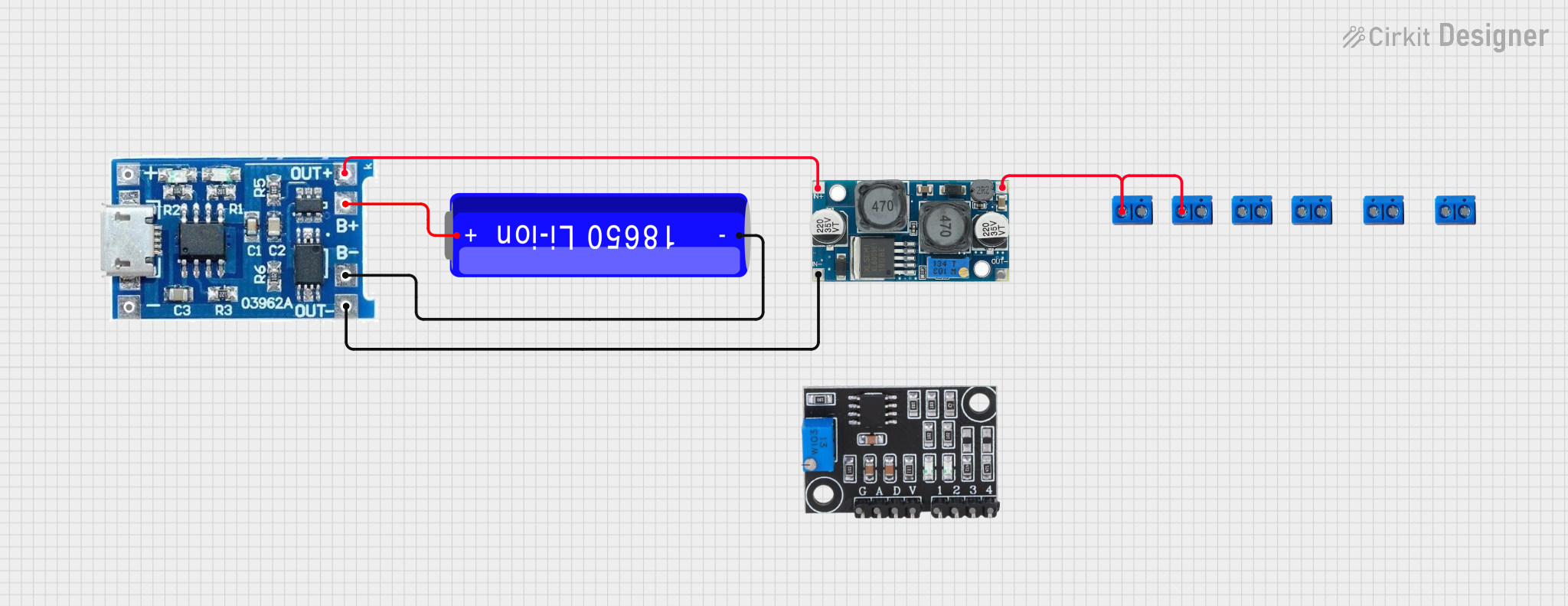
 Open Project in Cirkit Designer
Open Project in Cirkit Designer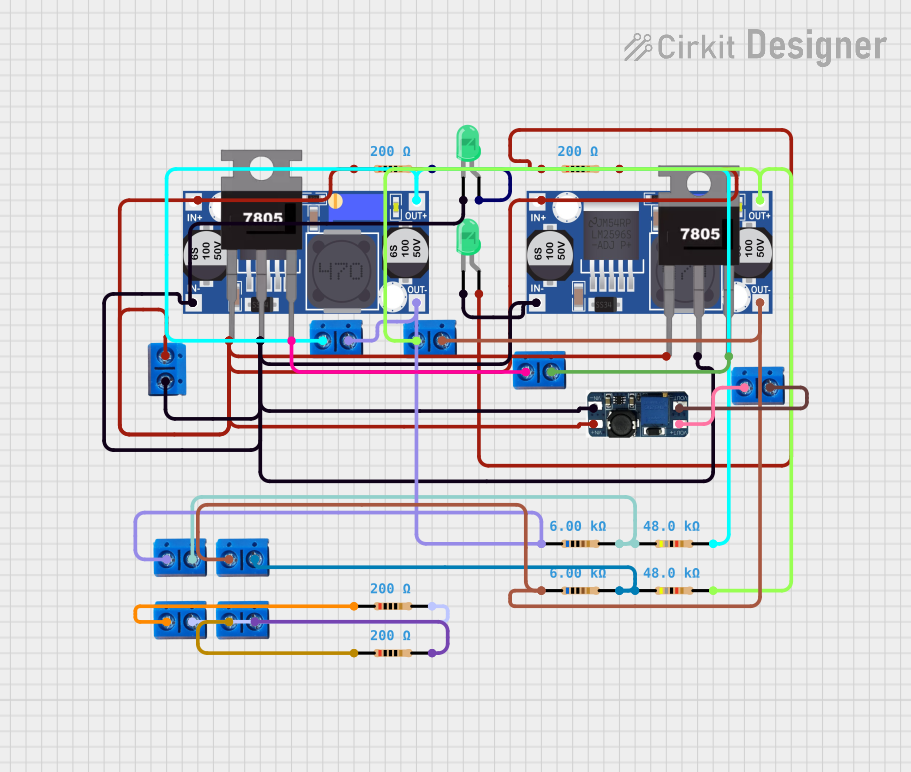
 Open Project in Cirkit Designer
Open Project in Cirkit DesignerExplore Projects Built with L7812LC

 Open Project in Cirkit Designer
Open Project in Cirkit Designer
 Open Project in Cirkit Designer
Open Project in Cirkit Designer
 Open Project in Cirkit Designer
Open Project in Cirkit Designer
 Open Project in Cirkit Designer
Open Project in Cirkit DesignerCommon Applications and Use Cases
- Power supply for microcontrollers, sensors, and other electronic modules
- Voltage regulation in DIY electronics projects
- Battery-powered systems requiring a stable 12V output
- Protection against voltage fluctuations in sensitive circuits
Technical Specifications
Key Technical Details
| Parameter | Value |
|---|---|
| Output Voltage | 12V |
| Maximum Output Current | 1A |
| Input Voltage Range | 14.5V to 35V |
| Dropout Voltage | 2V (typical) |
| Thermal Overload Protection | Yes |
| Short Circuit Protection | Yes |
| Operating Temperature Range | -40°C to +125°C |
| Package Type | TO-220 |
Pin Configuration and Descriptions
The L7812LC is typically available in a TO-220 package with three pins. The pinout is as follows:
| Pin Number | Name | Description |
|---|---|---|
| 1 | Input | Connects to the unregulated input voltage. |
| 2 | Ground | Common ground for input and output. |
| 3 | Output | Provides the regulated 12V output. |
Usage Instructions
How to Use the L7812LC in a Circuit
- Input Voltage: Connect the input pin (Pin 1) to a DC voltage source. Ensure the input voltage is at least 14.5V and does not exceed 35V.
- Output Voltage: Connect the output pin (Pin 3) to the load requiring a 12V supply.
- Ground Connection: Connect the ground pin (Pin 2) to the common ground of the circuit.
- Capacitors: For stable operation, it is recommended to use decoupling capacitors:
- A 0.33µF capacitor between the input pin and ground.
- A 0.1µF capacitor between the output pin and ground.
- Heat Dissipation: If the regulator is expected to dissipate significant power, attach a heatsink to the TO-220 package to prevent overheating.
Important Considerations and Best Practices
- Input Voltage Range: Always ensure the input voltage is within the specified range to avoid damage to the regulator.
- Current Limitation: Do not exceed the maximum output current of 1A to prevent thermal shutdown or damage.
- Heatsink Usage: For high current loads, use a heatsink to maintain safe operating temperatures.
- Bypass Capacitors: Use the recommended capacitors to minimize noise and improve stability.
Example: Connecting the L7812LC to an Arduino UNO
The L7812LC can be used to power an Arduino UNO by providing a stable 12V supply. Below is an example circuit and Arduino code:
Circuit Setup
- Connect the input pin of the L7812LC to a 15V DC power source.
- Connect the output pin to the Arduino UNO's VIN pin.
- Connect the ground pin to the Arduino's GND pin.
- Add a 0.33µF capacitor between the input pin and ground, and a 0.1µF capacitor between the output pin and ground.
Arduino Code
// Example code to blink an LED connected to pin 13 of the Arduino UNO
// Ensure the Arduino is powered via the L7812LC regulator
void setup() {
pinMode(13, OUTPUT); // Set pin 13 as an output
}
void loop() {
digitalWrite(13, HIGH); // Turn the LED on
delay(1000); // Wait for 1 second
digitalWrite(13, LOW); // Turn the LED off
delay(1000); // Wait for 1 second
}
Troubleshooting and FAQs
Common Issues and Solutions
No Output Voltage
- Cause: Input voltage is too low.
- Solution: Ensure the input voltage is at least 14.5V.
Overheating
- Cause: Excessive current draw or insufficient heat dissipation.
- Solution: Use a heatsink and ensure the load does not exceed 1A.
Output Voltage Fluctuations
- Cause: Missing or inadequate bypass capacitors.
- Solution: Add the recommended 0.33µF and 0.1µF capacitors.
Short Circuit Protection Triggered
- Cause: Output is shorted to ground.
- Solution: Check the circuit for shorts and correct the issue.
FAQs
Q: Can the L7812LC be used with an AC input?
A: No, the L7812LC requires a DC input. If using an AC source, you must first rectify and filter it to obtain a DC voltage.
Q: What happens if the input voltage exceeds 35V?
A: Exceeding the maximum input voltage can damage the regulator. Always ensure the input voltage stays within the specified range.
Q: Can I use the L7812LC without a heatsink?
A: For low current applications (e.g., below 500mA), a heatsink may not be necessary. However, for higher currents, a heatsink is recommended to prevent overheating.
Q: Is the L7812LC suitable for battery-powered systems?
A: Yes, as long as the battery voltage is within the input voltage range of the regulator.